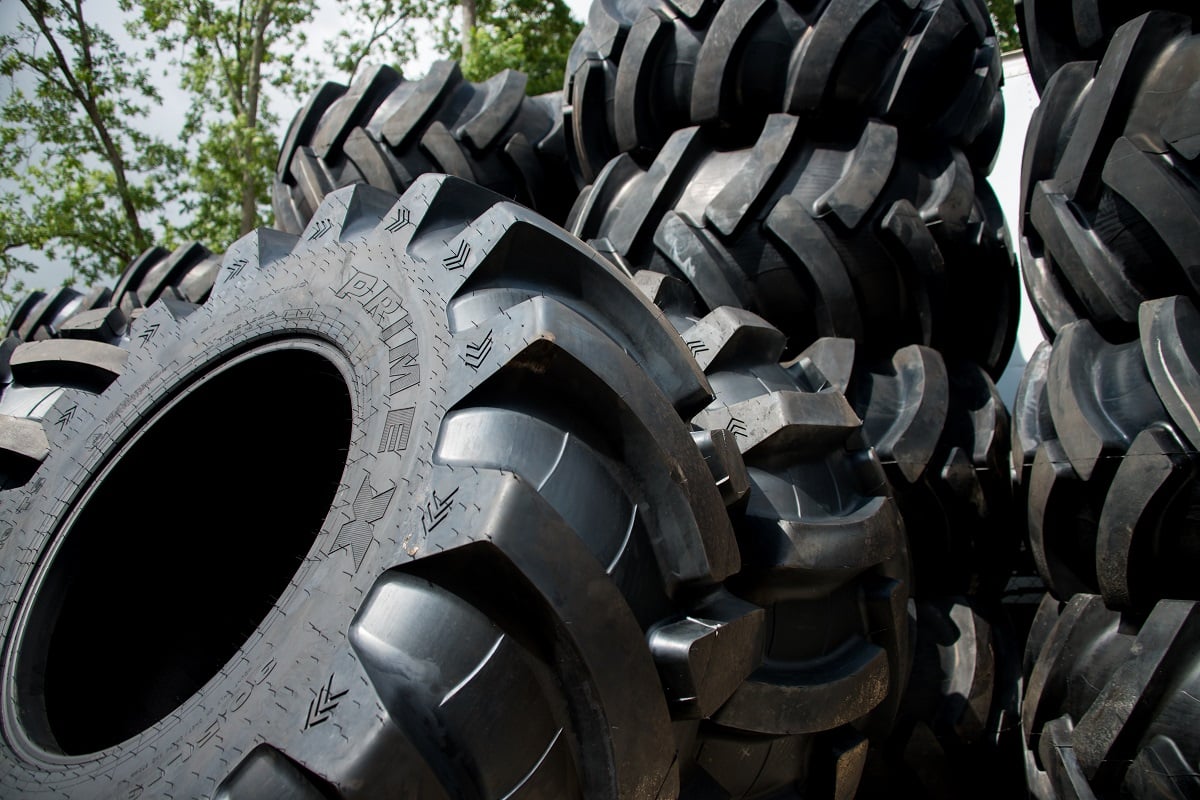Tips for Properly Storing OTR Tires
Whether it’s a farmer replacing the tires on their tractor or a construction company stocking up on skid steer tires, customers should consider a host of factors when selecting tires. For many, one of the most important criteria when buying new tires is the total cost of ownership (TCO) of a tire, or the overall cost of a tire to a customer from the time of purchase through resale or replacement. Maximizing the TCO of tires begins before they’re ever mounted to a machine, as proper storage plays a pivotal role in a tire achieving the lowest possible TCO.
The Importance of Proper OTR Storage
OTR tires are designed to work in some of the harshest, least-forgiving terrain imaginable—from stalk-filled far fields to debris-littered construction sites to rock-strewn mines. Tires are built tough, but rubber compounds are sensitive and susceptible to and can be subject to all sorts of physical and chemical damage. Ultimately, the failure to properly store OTR tires introduces numerous potential hazards and can lower the TCO of a tire.
Optimal Location for Storing OTR Tires
Store OTR tires in a clean, cool, dry place, out of direct light, and ideally in a climate-controlled atmosphere. Black tires want to soak up light—both natural and artificial—which can have a detrimental effect on their productivity and longevity. Direct sunlight and intense artificial lights can degrade tires and cause fine cracks in the sidewall or tread surfaces. Similarly, weather checking—also called weather cracking—can appear as networks of fine cracks. Deep weather checking can make OTR tires unsafe to operate and shorten their service life.
Even those who don’t have access to a climate-controlled place to store OTR tires should avoid subjecting them to extremely warm temperatures—heat is the number one enemy of tires. A good guideline is to store OTR tires in temperatures below 60° Fahrenheit (and avoid subjecting them to temperatures above the mid-70s). Too-warm temperatures can dry tires out, harden rubber, and lead to cracking. Cold storage can make tires brittle—it’s a good idea to let tires stored in cold conditions warm up before mounting.
It’s also important to store tires in a dry environment. Excess humidity can cause condensation on tires. As moisture evaporates off the surface of a tire, it takes with it some of the oils that help keep rubber healthy and pliable.
Storing OTR Tires Outside
For some, outside is the only OTR tire storage option. If you must store OTR tires outside, keep them covered with a heavy-ply, opaque, waterproof tarp. The tarp should keep rain and snow from pooling inside the tire. Use caution when moving tires stored in winter conditions—they can freeze to the ground and it’s possible to damage a tire when trying to break it free.
Avoid These Hazards When Storing OTR Tires
In addition to the environmental risks posed to tires by light, heat, and humidity, there are numerous other threats to stored OTR tires. Ozone is one such hazard to tires, as it breaks down the polymer chains in rubber and leads to ozone cracking—small splits typically appearing on the sidewall—which can render a tire unusable. Avoid storing OTR tires near ozone-producing equipment like electric motors, electric generators, arc welders, and fluorescent and mercury-vapor lamps.
It’s also important to store tires away from any oils, greases, fuels, solvents, or chemicals. Contact with any of these substances can cause a tire to deteriorate. In fact, tire rubber can even absorb vapors from the aforementioned materials, which can also cause degradation.
Positioning Stored OTR Tires
Unmounted OTR tires are best stored upright and off the ground—whether on a pallet, in a rack, or even on a waterproof tarp. This limits their potential contact with harmful materials and prevents them from being subjected to pressure from other tires. If stacking tires is the only option, refrain from stacking them so high that it places undue stress or deforms the bottom tire. A good rule of thumb is to not stack tires any taller than six feet high.
Handling Stored OTR Tires
It’s also important to exercise caution when moving stored OTR tires. Drops from heights greater than five feet can kink the bead area and make a tire unmountable. Forklifts also pose a threat to tires—they can cause punctures and stress at particular points of a tire. Operate with care, pay close attention to pallet forks, and use straps rather than chains or a hook—straps spread the weight of a lifted tire out over a larger area than a chain and reduce the odds of creating a pressure point.
Yokohama Off-Highway Tires America
Yokohama Off-Highway Tires are designed to deliver high performance, long service life, and exceptionally low total cost of ownership. Proper storage is an important step in extending the life of your tires and maximizing your return on investment in them. Contact your Yokohama Off-Highway Tires America, Inc. dealer or rep to learn more about our application-specific tire offerings or for more great tips to improve the TCO of your tires.

